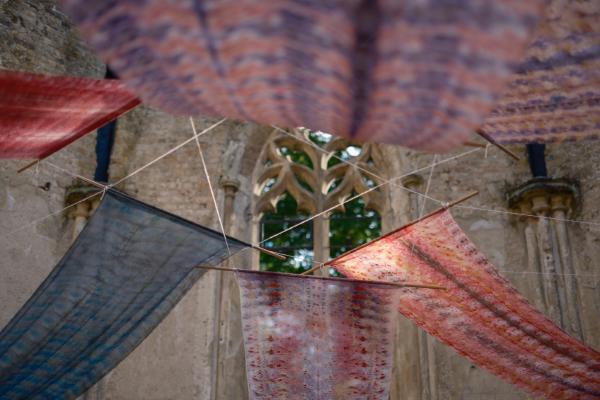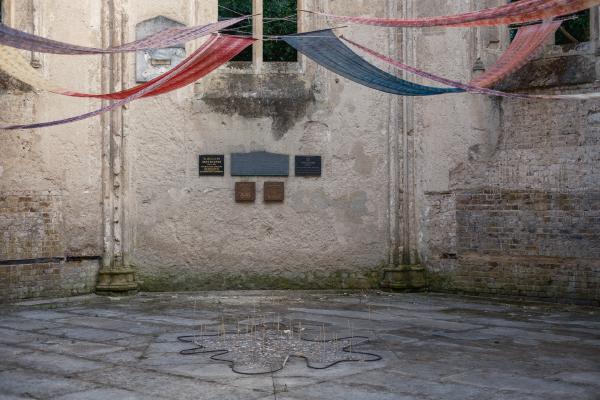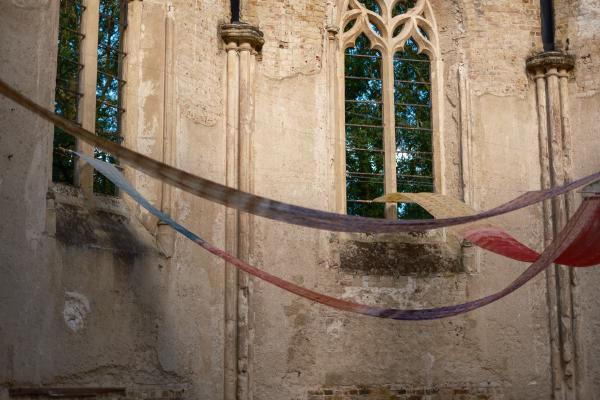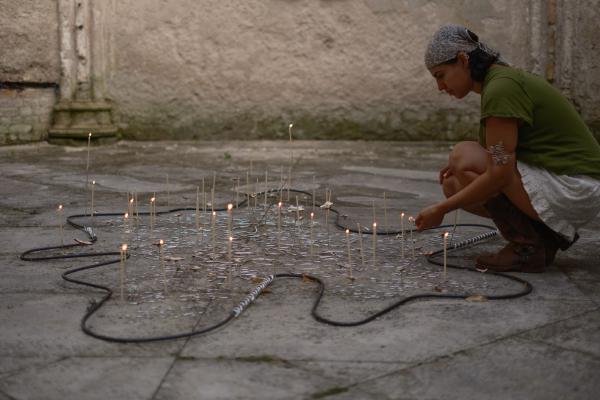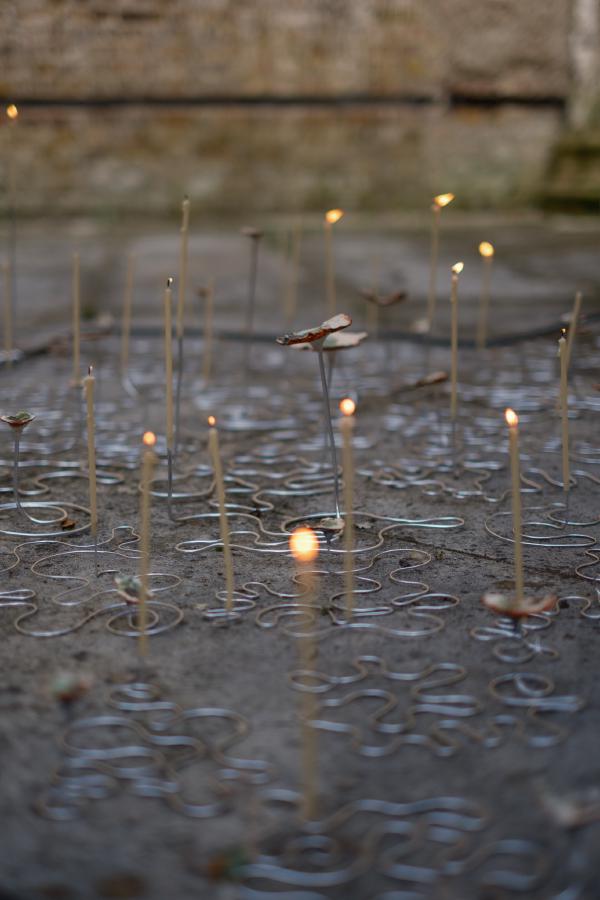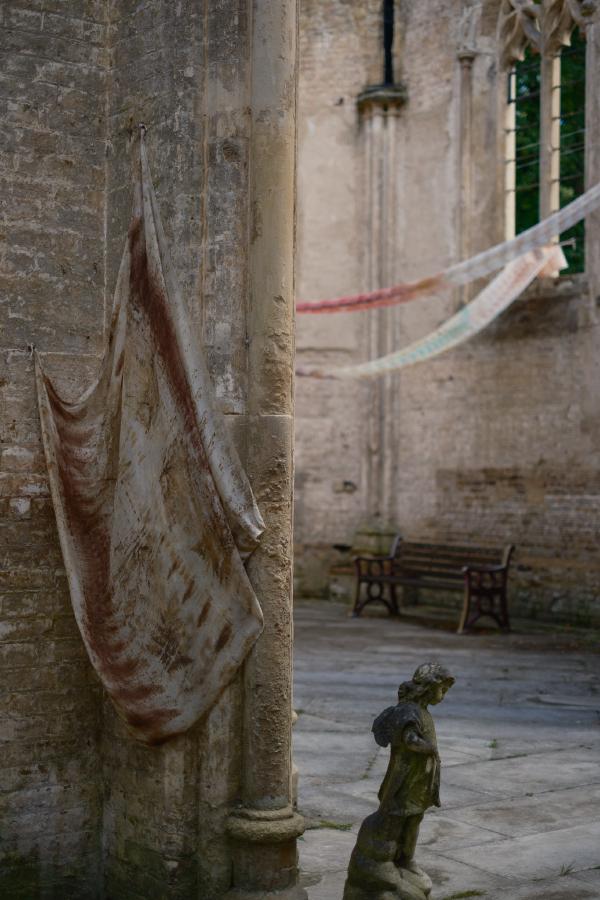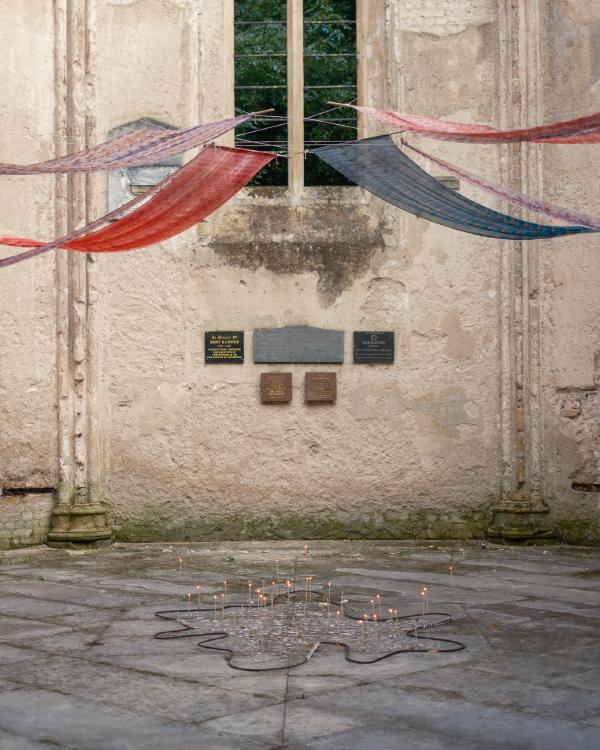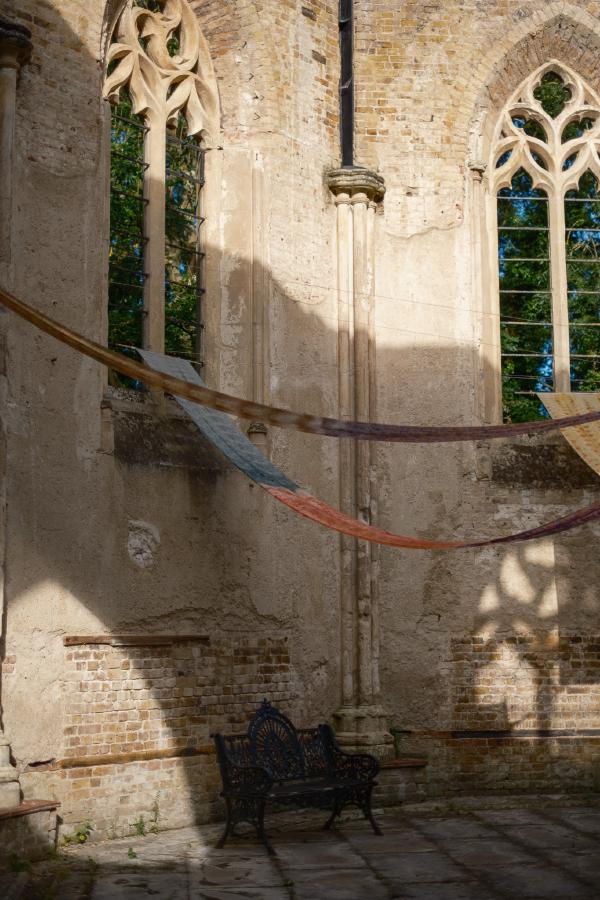Andie Aylsworth
ZM
Back in March I was invited to join a crit with some recent graduates from CSM’s Associate Studio Programme – they’re based in a studio down in Elephant & Castle, they get some budget to programme crits and studio visits with weirdos like me, and it’s a nice way to support students and their practices with a lil gentle landing as they graduate etc.
While I was there I spoke to Andie Aylsworth, one of the studio associates, about her practice and a recent solo show she had at Nunhead Cemetery.
Here’s the info blurb:
[presented in association with The Feminist Lecture Program, Friends of Nunhead Cemetery and Southwark Council]
Sacred Ecology of the Universal Everything subverts the idea of nature as a stage in which human history is enacted upon and instead presents it as an active agent of history. Aylsworth creates a venerative space within Nunhead chapel to facilitate moments of recognition for the vegetal kin embedded in the artworks presented. The traditional boundary between nature and culture is deconstructed, highlighting the interconnectedness of all living beings. This exhibition draws from the wisdom of indigenous traditions, emphasizing the deep kinship we share with our more-than-human relatives. By doing so, it challenges the Western misconception of nature as a separate entity from culture.
During our crit, Andie had these enormous cardboard tubes, inside, there were these silky little tapestries – the same ones pictured below, swagged like banners or hangings across the inside of the chapel.
In the studio, they had a completely different energy. They appeared to me more like enormous handkerchiefs, ribbons, dresses. They addressed the body more immediately as Andie held them out in front of us. I closed my eyes and imagined them above my head, translucent, so I could see the clouds and the sky through them.
Andie described how she made the tapestries – by placing plants on the material, leaving them to leak and stew across the fabric. She was adamant – this was not a painting practice, these tapestries were not paintings. They were like remnants, relics, documentation of another process and collaborative act entirely. She described the plants in a way that acknowledged that they had a kind of agency or will of their own – these plants were her collaborators, or they were the mark-makers, and she was just a vehicle and a facilitator that enabled them to express their marks on the fabric. It was a weird and unwieldy kind of abstraction. An abstraction of process, time, intention, of maker and makerliness.
It made me think about Daisy Hildyard’s books: both The Second Body and Emergency. The idea that humans, as animals, have 2 bodies. One: flesh and blood, two: planetary, causal, ephemeral. Our second body is a metaphor for impact, we can spot it in rising tides, migration patterns, melting icecaps, starlings flying south for winter. The idea that someone could write a novel on that planetary scale, rather than the flesh and blood scale, that that novel would be the only way to make the emergency we are in palpable literarily speaking.
Emergency is a novel billed as a DARK PASTORAL FOR THE CLIMATE CHANGE ERA. it’s a compelling strapline. And as I imagined the tapestries swaying above me, sky leaking through, I thought about the way bucolic landscapes are translated into tapestries that sit in people’s houses. maybe we think of them as kitsch, maybe just ornamental. But if there’s such a thing as dark pastoral, maybe this is a tapestry for that kind of landscape. I thought about the plants willing those marks into life. Leaking ink and stain and juice across the fabric, in the same way trees communicate under the soil, through their roots. Planetary time. Markmaking through the second body. I know that paintings do not speak, abstract paintings even less so. And I know that plants cannot speak in a way that is legible or coherent to us. But I wondered what feeling or affect those mark-making plants might be transmitting, energetically, across the sky or the studio. What were they saying to me?
